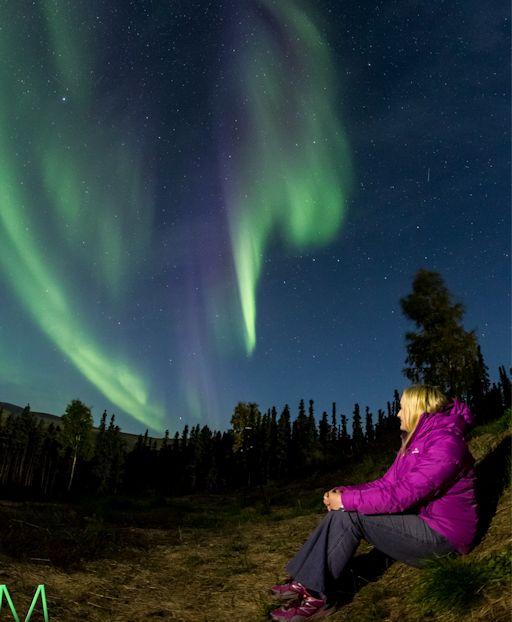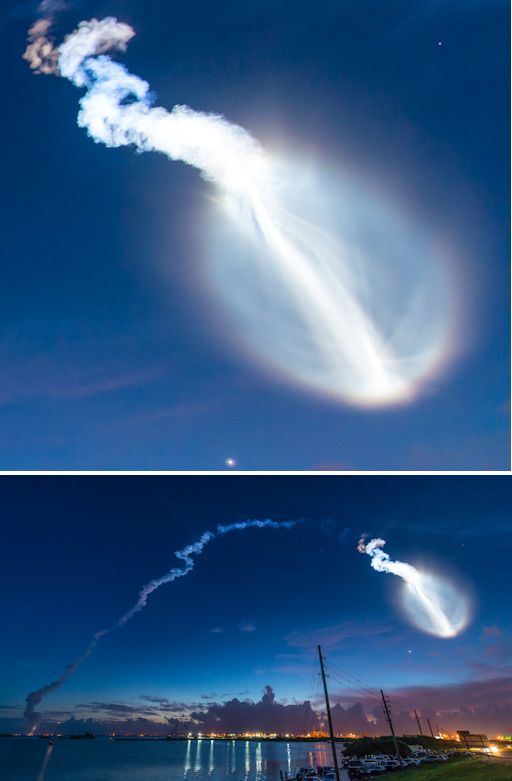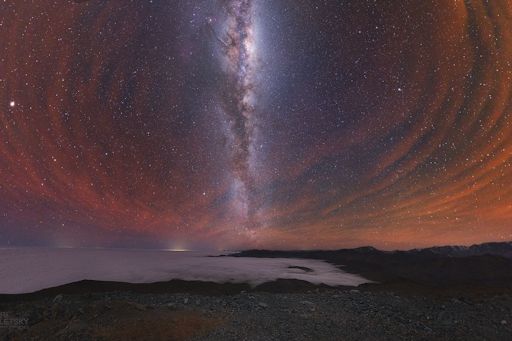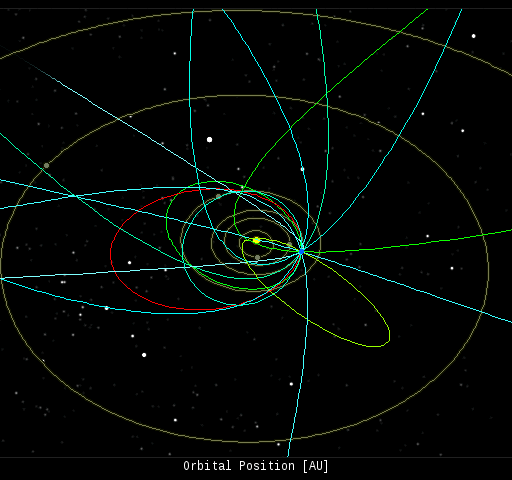Marianne's Heaven On Earth Aurora Chaser Tours Chasethelighttours.co.uk invites you to join them in their quest to find and photograph the Aurora Borealis. Experience the winter wonderland in the Tromsø Area. | | |
MINOR GEOMAGNETIC STORMS: Earth is passing through a stream of solar wind, and this is causing minor (G1-class) geomagnetic storms around the Arctic Circle. Last night in Alaska, bright auroras appeared over Fairbanks, Alaska, prompting photographer Marketa S. Murray to make this self-portrait:

"It was an incredible night, and this is just the beginning of the season!" she says. Elsewhere in North America, auroras were sighted in Vermont, Michigan, and the Yukon Territories.
More displays are possible tonight as Earth moves further into the solar wind stream. NOAA forecasters estimate a 25% to 40% chance of continued geomagnetic storms on Sept. 4-5. Aurora alerts: text or voice
Realtime Aurora Photo Gallery
NOCTILUCENT ROCKET EXHAUST: On Sept. 2nd, an Atlas V rocket blasted off from Cape Canaveral carrying a Navy communications satellite to orbit. The dawn launch was much anticipated by local sky watchers. Waking up early turned out to be a good decision. "What see saw blew our, and everyone's, minds," reports Jack Jewell, who took these pictures from a grassy hill near the NASA causeway:

"I've seen enough launches just before sunrise to know that sunlit rocket plumes against a darkish sky can be magical," says Jewell. "This was one of the best."
The Atlas V created a man-made noctilucent cloud. Water vapor in the rocket's exhaust crystallized in the high atmosphere, creating an icy cloud that turned blue when it was hit by the rays of the morning sun. Years ago, space shuttle launches produced similar displays.
Natural noctilucent clouds form around Earth's poles when water vapor in the mesosphere crystalizes around meteor smoke. Sometimes they spread as far south as Colorado and Utah, but rarely or never Florida. Electric-blue over the Sunshine State requires a rocket launch. Browse the realtime photo gallery for more images of the Atlas V exhaust:
Realtime Space Weather Photo Gallery
RED AIRGLOW OVER CHILE: On Sept. 1st, astrophotographer Yuri Beletsky hiked into the Atacama Desert of Chile for a deep exposure of the Milky Way. He got that and much more. "There was a stunning display of red airglow," he says. It surrounded the Milky Way like a celestial bulls-eye:

Airglow is aurora-like phenomenon caused by chemical reactions in the upper atmosphere. Human eyes seldom notice the faint glow, but It can be photographed on almost any clear dark night, anywhere in the world.
The curious thing about Beletsky's photo is not the presence of airglow, but rather its color--red. Airglow is usually green, the color of light from oxygen atoms some 90 km to 100 km above Earth's surface. Where does the red come from? Instead of oxygen, OH can produce the required color. These neutral molecules (not to be confused with the OH- ion found in aqueous solutions) exist in a thin layer 85 km high where gravity waves impress the red glow with a dramatic rippling structure.
"It was a truly special night," says Beletsky. "Pure tranquility."
Realtime Sprite Photo Gallery
Realtime NLC Photo Gallery
Every night, a network of NASA all-sky cameras scans the skies above the United States for meteoritic fireballs. Automated software maintained by NASA's Meteoroid Environment Office calculates their orbits, velocity, penetration depth in Earth's atmosphere and many other characteristics. Daily results are presented here on Spaceweather.com.
On Sep. 4, 2015, the network reported 29 fireballs.
(28 sporadics, 1 alpha Aurigid)

In this diagram of the inner solar system, all of the fireball orbits intersect at a single point--Earth. The orbits are color-coded by velocity, from slow (red) to fast (blue). [Larger image] [movies]
Potentially Hazardous Asteroids (
PHAs) are space rocks larger than approximately 100m that can come closer to Earth than 0.05 AU. None of the known PHAs is on a collision course with our planet, although astronomers are finding
new ones all the time.
On September 4, 2015 there were potentially hazardous asteroids.
Notes: LD means "Lunar Distance." 1 LD = 384,401 km, the distance between Earth and the Moon. 1 LD also equals 0.00256 AU. MAG is the visual magnitude of the asteroid on the date of closest approach. | | The official U.S. government space weather bureau |
| | The first place to look for information about sundogs, pillars, rainbows and related phenomena. |
| | Researchers call it a "Hubble for the sun." SDO is the most advanced solar observatory ever. |
| | 3D views of the sun from NASA's Solar and Terrestrial Relations Observatory |
| | Realtime and archival images of the Sun from SOHO. |
| | from the NOAA Space Environment Center |
| | the underlying science of space weather |
| | Web-based high school science course with free enrollment |

